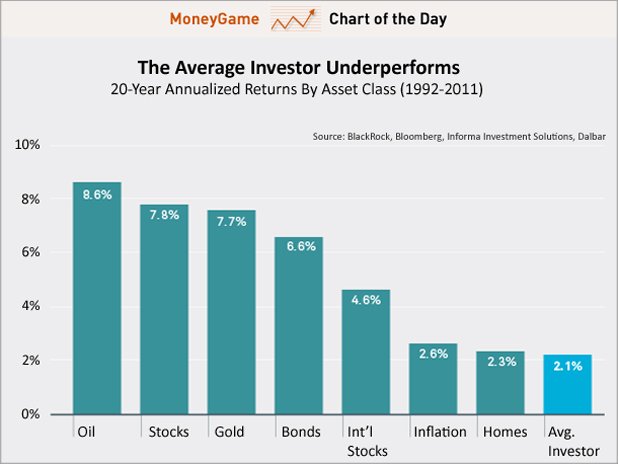Now that the kids are back to school, it’s time to hit the books for you and your money, starting with one of the most misunderstood asset classes: BONDS.
Companies have two basic ways to finance their operations: through stock and through bonds. When you purchase stock (“shares” or “equity”), it represents ownership of a publicly traded company. As a common stock holder, you get a piece of what the company owns (assets) and what it owes (liabilities). You are also entitled to voting rights and dividends, which are the portion of a company's profits it distributes to its shareholders. Stock prices move based on supply and demand: if more people think the company will deliver future financial results, they will buy it and the stock will rise.
When you buy a bond, you are actually lending money to an entity -- the US or a foreign government, a state, a municipality or a company -- for a set period of time — from 30 days to 30 years — at a fixed rate of interest (the term “fixed income” is often used to describe the asset class of bonds.) At the end of the term, the borrower repays the obligation in full.
Bond prices fluctuate based on the general direction of interest rates. Here’s how it works: if you own a 10-year US government bond that is paying 5 percent, it will be worth more now, when new bonds issued by Uncle Sam are only paying a little more than percent. Conversely, if your bond is paying 2 percent and your friend can purchase a new bond paying 5 percent, nobody will be interested in your bond and the price will fall. That’s why bond prices move in the opposite direction of prevailing rates, regardless of the bond type. So, if you hear that interest rates are on the rise, you can count on your individual bond or bond mutual fund dropping in value.
Although often hailed as “safe,” bond investors face a number of risks, in addition to the interest rate risk described above. One is credit risk, which is the risk of default or that the entity does not pay you back. That is a pretty low risk if the entity is the US government, but can be a high one if it’s a company or town that is in trouble. Another risk is inflation. Even if the bonds are paid in full, the promised rate of interest can turn out to be worth less over time due to inflation, which eats into the fixed stream of payments.
Because bonds deliver a consistent stream of income, many investors view them as the perfect retirement vehicle. But as mentioned above, bond prices can fluctuate. The worst calendar year for the broad bond market was 1994, when returns were -2.9 percent due to an unexpected upward shift in interest rates (prices dropped more, but the interest from bonds helped defray some of those losses). So you CAN lose money in the bond market, though the magnitude of the fluctuations tends to be smaller than those in stocks and other riskier asset classes.
The magnitude of a bond loss is partially tied to the duration of the holding. Duration risk measures the sensitivity of a bond’s price to a one percent change in interest rates. The higher a bond’s (or a bond fund’s) duration, the greater its sensitivity to interest rates changes. This means fluctuations in price, whether positive or negative, will be more pronounced. Short-term bonds generally have shorter durations and are less sensitive to movements in interest rates than longer-term bonds. The reason is that bonds with longer maturities are locked in at a lower rate for a longer period of time.
For those of you who own individual bonds, the price fluctuations that occur before your bonds reach maturity may be unnerving, but if you hold them to maturity, you can expect to receive the face value of the bond. If you own a bond fund, it may be scary to see the net asset value (NAV) of the fund drop when rates increase. To soothe you a bit, remember that when NAV falls, the bonds within the fund should continue to make the stated interest payments. As the bonds within the fund mature or are sold, they can be replaced with higher-yielding bonds, which could create more income for you in the future. Additionally, if you are reinvesting interest and dividends back into the fund, you may benefit from purchasing shares at lower prices.
To help protect your portfolio against the eventual rise in interest rates, you may be tempted to sell all of your bonds. But of course that would be market timing and you are not going to fall for that, are you? Here are alternatives to a wholesale dismissal of the fixed income asset class:
Lower your duration: This can be as easy as moving from a longer-term bond into a shorter one. Of course, when you go shorter, you will give up yield. It may be worth it for you to make a little less current income in exchange for diminished volatility in your portfolio.
Use corporate bonds: Corporate bonds are less sensitive to interest-rate risk than government bonds. This does not mean that corporate bonds will avoid losses in a rising interest rate environment, but the declines are usually less than those for Treasuries.
Explore floating rate notes: Floating rate loan funds invest in non-investment-grade bank loans whose coupons "float" based on the prevailing interest rate market, which allows them to reduce duration risk.
Keep extra cash on hand: Cash, the ultimate fixed asset, can provide you with a unique opportunity in a rising interest rate market: the ability to purchase higher yielding securities on your own timetable.
![Jill on Money [ Archive]](http://images.squarespace-cdn.com/content/v1/59efbd48d7bdce7ee2a7d0c4/1510342916024-TI455WZNZ88VUH2XYCA6/JOM+Blue+and+White.png?format=1500w)






